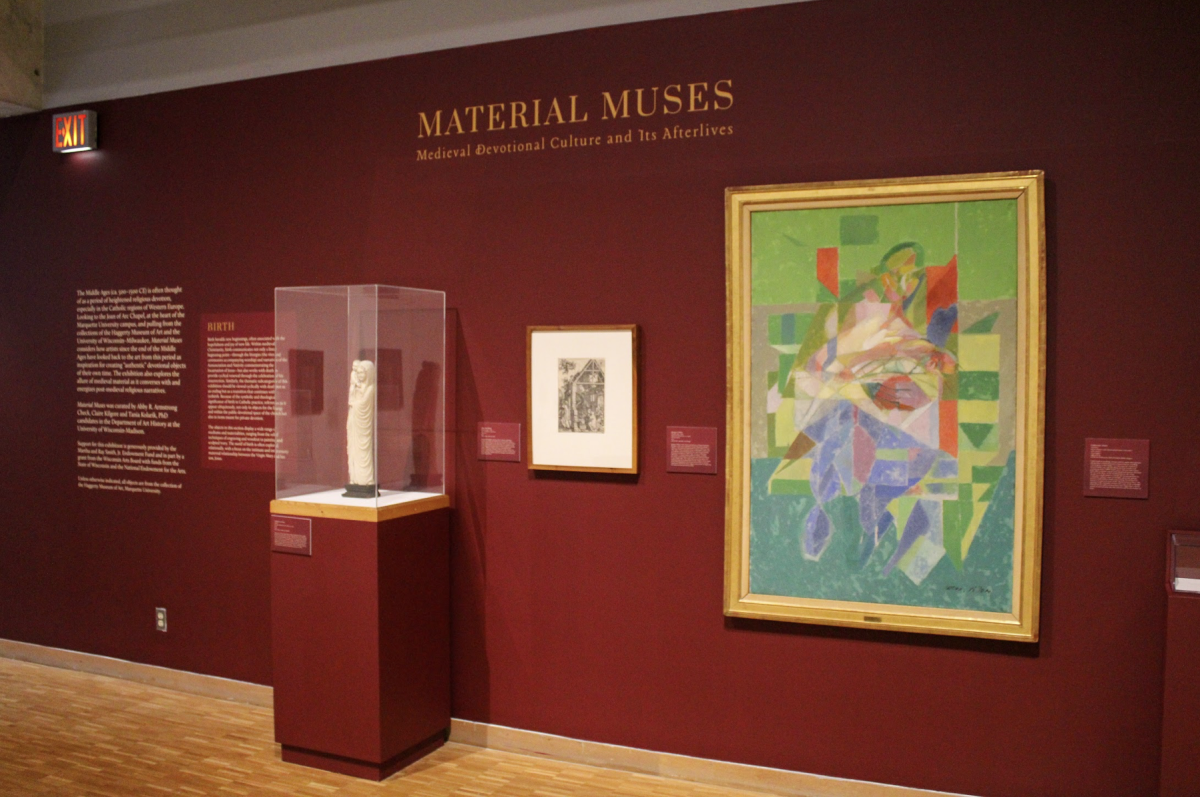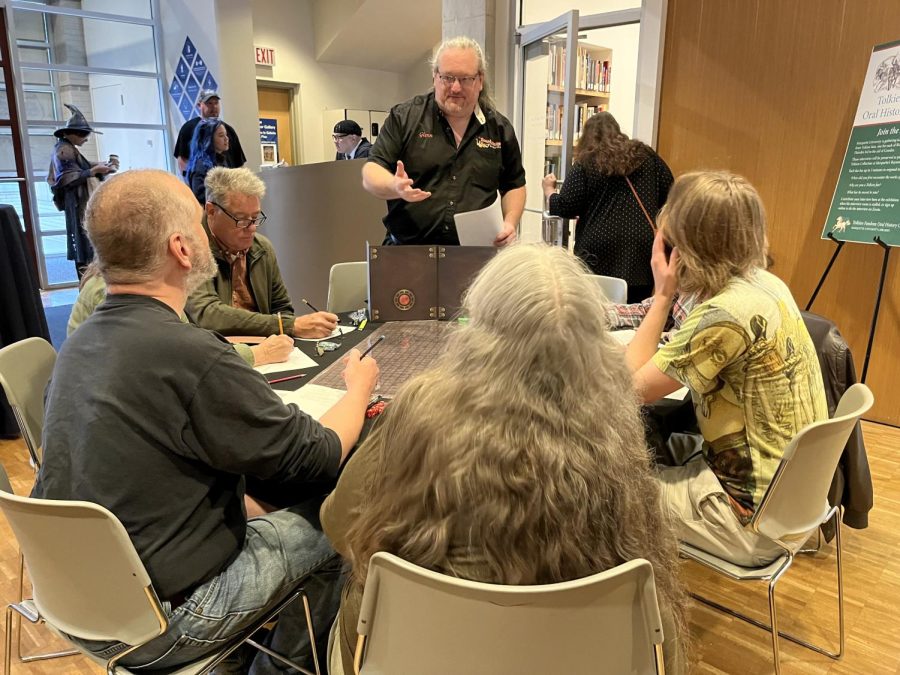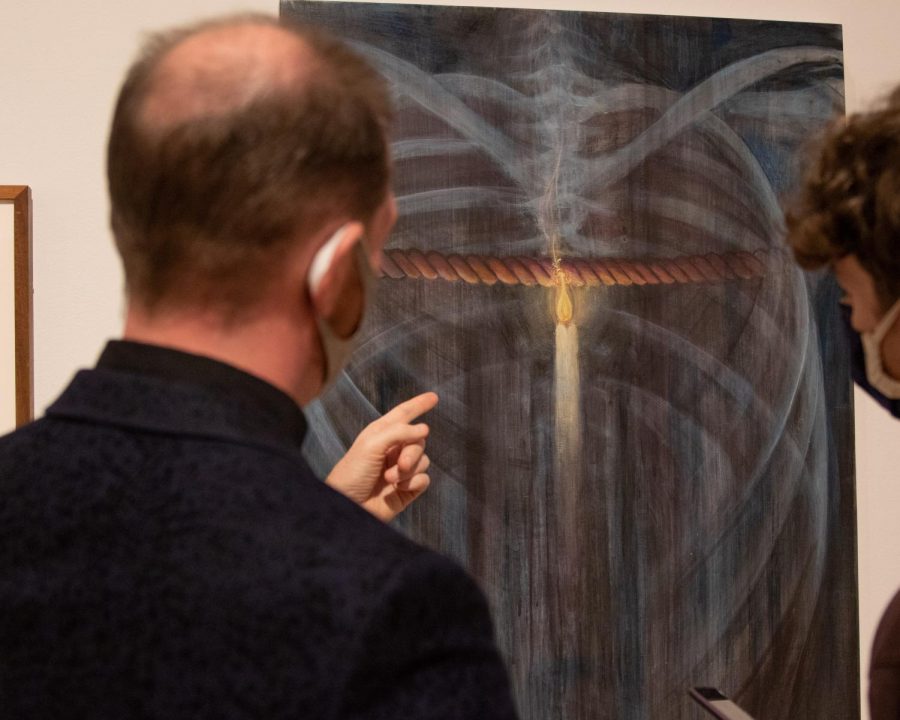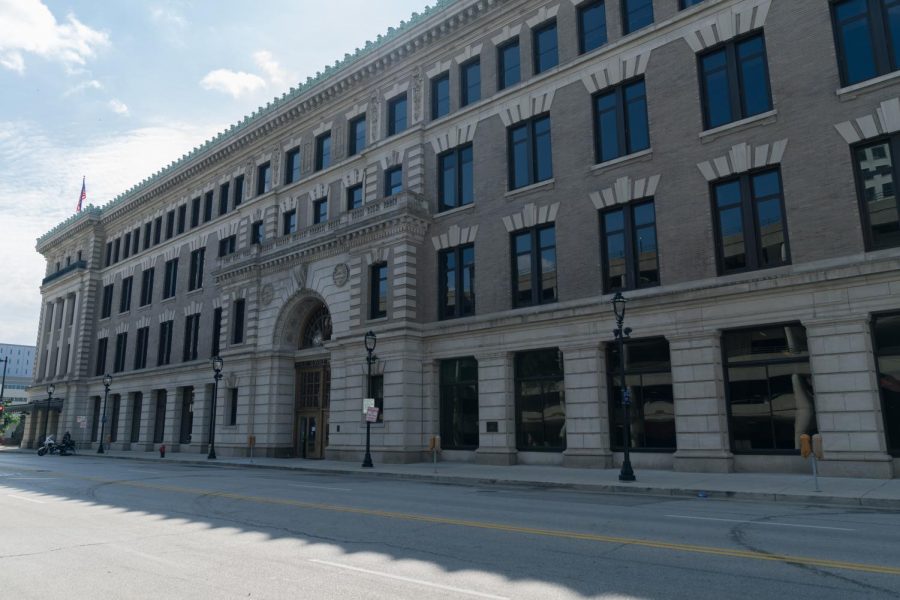 Leave it to the Haggerty Museum of Art to put a unique spin on the Centennial Celebration of Women at Marquette.
Leave it to the Haggerty Museum of Art to put a unique spin on the Centennial Celebration of Women at Marquette.
Six new exhibitions opened at the museum last Thursday, three of which present photography from talented female artists in honor of women at Marquette. The artists featured are Stella Johnson, Lucinda Devlin and Barbara Morgan, each of whom brings a different style and subject matter to the museum.
Wally Mason, director of the Haggerty, said he wanted to find a way to celebrate the centennial with the rest of the university.
“They are disparate in content,” said Wally Mason, director of the Haggerty, “and that was intentional because the only thing they have in common is that they are women.”
“Cameroon Images from Al Sol” displays nine images taken by Johnson in the west African nation of Cameroon. The images come from a series of over 40 photographs taken of rural families living in Mexico and Nicaragua as well as Cameroon.
In these photographs, Johnson recorded the daily lives of the Gbaya and Fulbe cultures in Djohong and other surrounding villages in the northeastern savannah region of the country. The individuals shown in the photographs live day to day without the luxuries of electricity or running water, let alone cell phones or the internet.
Johnson said her intention with this series was for people to appreciate others for who they are. She wanted to convey that everyone has the same desires, needs and loves, no matter what country they live in.
“These pictures are about the fleeting moments, the intangible gestures,” said Johnson. “It is not the moment itself that is important – the wedding, the baptism – it is the moment around the moment.”
Johnson said she is privileged to be included in Marquette’s Centennial Celebration of Women. For her, honoring the education of women is significant because it was always the men in the villages she visited who were educated first.
“In the places where I go women are absolutely subservient to men,” said Johnson. “The men are educated, and most of the women can’t read.”
Once a month, Johnson would take her photographs into the village of Bawaka Koi and hang them on a clothesline for people to see. She said those pictures transformed the lives of the women because they were able to participate in their community without needing to read any text. They could understand the photographs, and that was enough.
Jessica Grimm, a senior in the College of Nursing and student guard at the Haggerty, was happy to see the museum is using its resources to celebrate the women’s centennial. She was also impressed by Johnson’s work.
“She is showing that women can do it too, you know,” said Grimm. “Women can travel and take pictures just like men can.”
Like Johnson’s work, Devlin’s photography serves a documentary purpose. Her collection, “The Omega Suites,” presents 12 photographs of execution chambers, holding cells and viewing rooms in penitentiaries across the United States.
Lynne Shumow, educational director at the Haggerty, said it is a strong exhibition that addresses all the issues behind capital punishment.
“It is something people don’t normally see,” said Shumow. “It is making something visible that is usually invisible.”
The title “The Omega Suites” is a deliberate allusion to the final letter of the Greek alphabet, which Devlin uses as a metaphor for the finality of execution. It is also clever because the word ‘suites’ produces a mental image of lavish, elegant rooms when it actually refers to some of the most barren and sterile spaces in America.
Not unlike the title, the photographs themselves are quite enticing until you realize exactly what they depict.
“They are very beautiful,” said Shumow. “You see the composition and you see the lighting, but then it really makes you think.”
Caitlin O’Brien, a sophomore in the College of Arts & Sciences and student guard at the Haggerty, agreed with Shumow’s sentiment: you’re drawn in before you really know what you are looking at.
“I feel like it is half intriguing and half terrifying,” said O’Brien.
Devlin effectively addresses one of the most controversial topics of the century by creating images that stick in people’s minds long after they’ve left the museum.
Morgan’s collection, “The Montages,” differs from Johnson and Devlin’s work in that it is not documentary-based.
“The Montages” is a selection of the museum’s permanent collection that shows off some of Morgan’s most innovative black and white pieces with unique images of cityscapes and street scenes. Produced in the 1930s and 1940s, these photographs are among the more experimental pieces in modern American photography.
Morgan uses photographic techniques like double exposure and photomontage that give her work an intriguing ambiguity. Double exposure is a technique in which the film is exposed twice to two different images, in order to create a photograph that shows the second image superimposed over the first. With photomontage, multiple negatives are layered to combine the images into one composition.
“Barbara’s (works) are very experimental types of imagery,” said Shumow, “and she is not working with digital photography.”
All three exhibitions will be at the Haggerty until April 18. Admission is free and open to the public.







